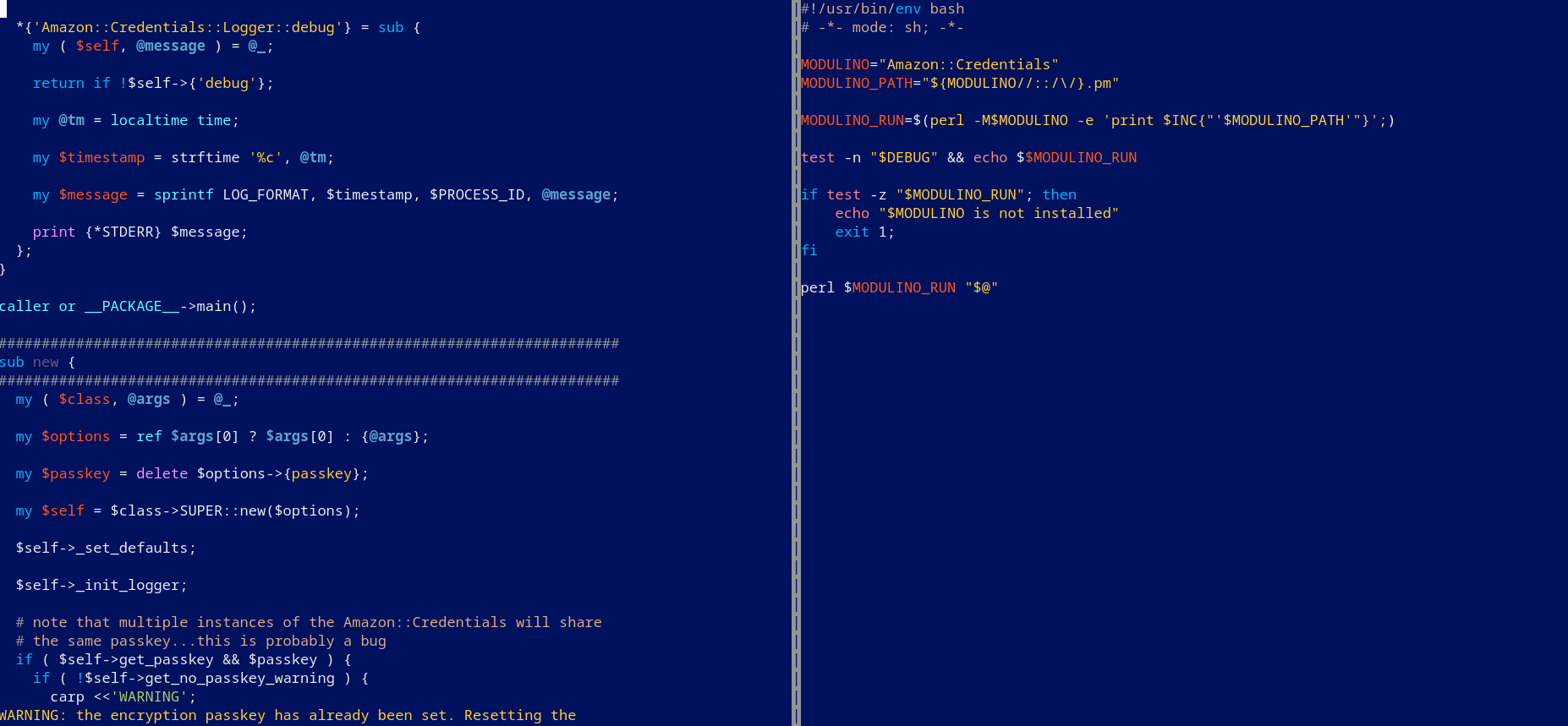
Brian d foy introduced the Perl community to the idea of a script and module in the same file (the so-called modulino concept). Essentially, the idea is that you can create a script that provides a command line interface to your Perl module. Essentially, the implementation looks something like this:
package Foo
caller or __PACKAGE__->main();
# package guts
...
sub main {
my $foo = Foo->new;
use Getopt::Long;
# do something interesting here...
exit 0;
}
1;
This model comes in quite handy when writing scripts or just exercising your module during it’s creation.
I sometimes find it useful to then create a bash script that invokes
my modulino. Since I might want to point to a development version
of the script, I might set my PERL5LIB path to my local development
environment. Running the modulino script, I would then expect it to
use the version in my path. Hence the following modulino script.
#!/usr/bin/env bash
# -*- mode: sh; -*-
MODULINO="Amazon::Credentials"
MODULINO_PATH="${MODULINO//::/\/}.pm"
MODULINO_RUN=$(perl -M$MODULINO -e 'print $INC{"'$MODULINO_PATH'"}';)
test -n "$DEBUG" && echo $$MODULINO_RUN
if test -z "$MODULINO_RUN"; then
echo "$MODULINO is not installed"
exit 1;
fi
perl $MODULINO_RUN "$@"
…and then
$ amazon-credentials.sh -h amazon-credentials.sh options Formats credentials found in env, config, SSO, role Options ------- --help, -h this --ec2, get credentials from server IAM profile --env get credentials from environment variables --profile, -p get credentials from profile in credentials configuration --role get credentials from SSO role --account use with --role, specify AWS account id $ amazon-credentials.sh --profile=test export AWS_ACCESS_KEY_ID=AKI***************** export AWS_SECRET_ACCESS_KEY=**************************************** $ aws sso login $ amazon-credentials.sh --role my-sso-role --account 01234567890
More information about modulinos can be found here:

 www.linkedin.com/in/robert-lauer-1590513
www.linkedin.com/in/robert-lauer-1590513